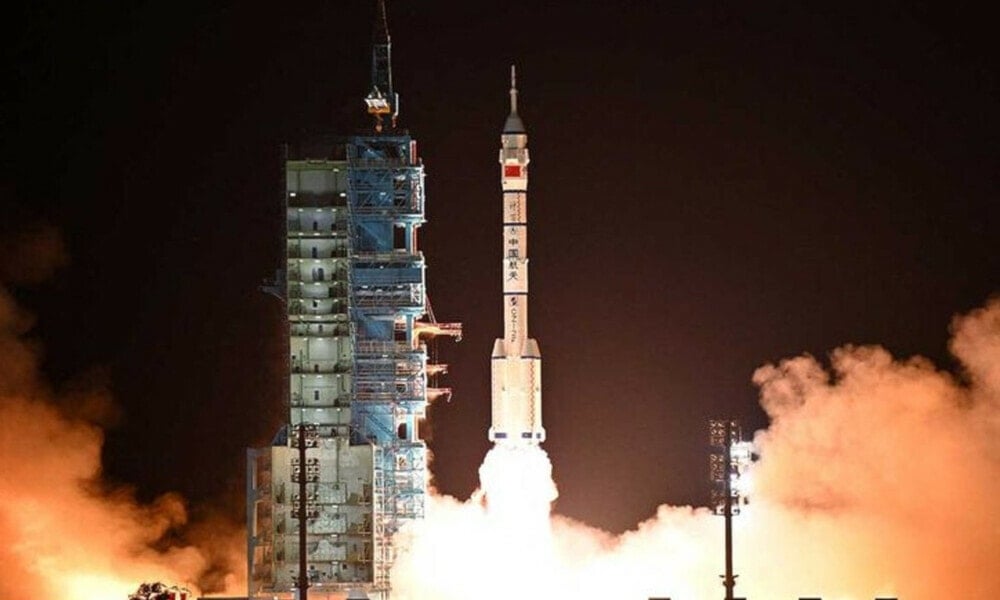China to land astronauts on Moon by 2030
China announces progress toward its 2030 moon landing plan and unveils the next Shenzhou mission crew heading to the Tiangong space station this week.
-

Footage from the three-person crew blast off for China's Tiangong space station on October 30, 2024. (AFP)
China announced on Thursday that it remains firmly on course to land astronauts on the moon by 2030, as part of its expanding ambitions in space exploration. The statement coincided with the unveiling of a new crew set to launch to the Tiangong space station later this week.
“Currently, each program of the research and development work of putting a person on the moon is progressing smoothly,” said Zhang Jingbo, spokesperson for the China Manned Space Program.
He cited key components of the lunar mission, such as the Long March 10 rocket, new moon landing suits, and a lunar exploration vehicle, as evidence of steady progress, adding, "Our fixed goal of China landing a person on the moon by 2030 is firm."
As part of China’s ongoing manned missions, the latest Shenzhou crew is scheduled to launch Friday at 11:44 p.m. (local time) from the Jiuquan Satellite Launch Center. The new three-member team will join the Tiangong space station as part of China’s standard six-month crew rotation.
The crew includes:
- Zhang Lu, a veteran of the Shenzhou 15 mission
- Wu Fei and Zhang Hongzhang, both first-time astronauts
The astronauts will conduct scientific research and maintenance aboard Tiangong, which is expected to serve as the foundation for future long-term space habitation and deep-space missions.
Scientific focus: Studying life in space
In addition to the crew, the mission will carry four mice, two male and two female, to study the effects of weightlessness and confined environments on small mammals. The research is part of broader efforts to understand how long-term spaceflight impacts biological systems, with implications for both astronaut health and future deep-space travel.
China began construction of the Tiangong or "Heavenly Palace," space station, after being excluded from the International Space Station due to US national security concerns over the Chinese space program’s links to the military.
Since then, Tiangong has become a centerpiece of China’s space exploration goals, positioning the country as a major player in low-Earth orbit research and future lunar missions. The station has already hosted multiple astronaut crews and scientific experiments.
With continued advancements in rocket technology, crew training, and lunar infrastructure, China’s space agency maintains that its 2030 moon landing plan remains fully on track, marking a milestone that would further solidify its position as a global leader in space exploration.
Trump taps more firms to challenge China in space
In a similar vein, Donald Trump was reported on October 20 to be planning to add more companies to the Artemis III Moon mission contract because SpaceX is running behind schedule, according to US Transportation Secretary and interim NASA administrator Sean Duffy.
"Artemis III is when we land back on the Moon. That's going to be about a year and a half, two years from now. SpaceX has the contract. SpaceX is an amazing company. They do remarkable things, but they're behind schedule. So, the President [Trump] wants to make sure we beat the Chinese. He wants to get there in his term. So, I'm in the process of opening that contract up," Duffy told Fox News.
Duffy mentioned he anticipates that private space company Blue Origin, which is owned by billionaire Jeff Bezos, along with other firms, will compete to return to the Moon ahead of China.

 4 Min Read
4 Min Read








